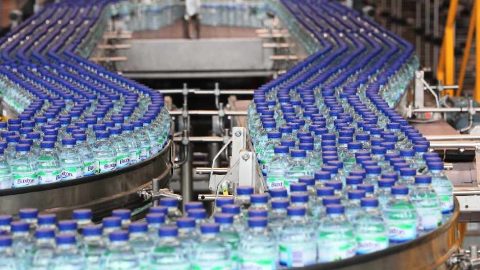
Lean production line at Nestle's £ 35 million factory
Improving productivity and quality is always the top concern of managers at Nestle. During the development process, this company has applied many innovative tools and models such as Lean, 6 Sigma (DMAIC), Kaizen, FADE, CQI (Continuous Quality Improvement), TQM (Total Quality Management), etc to achieve their improvement goals.
Lean – Waste reduction tool
Lean focuses on reducing the waste of resources used in the manufacturing process. Therefore, Lean’s goal is to optimize the use of materials, equipment, human resources, space and time. At Nestlé, this approach is called Nestlé Continuous Excellence (NCE). Based on NCE platform, Nestlé has implemented a series of solutions to minimize 7 types of waste in the factory, including: wasting time and energy transporting materials; waste unused raw storage space; waste unnecessary travel; waste of time waiting between stages; waste due to repetitive action; waste due to raw material surplus and wasted due to rework, defective products.
For wasting time and space, Nestlé reduces these wastes by rearranging the work area. Typically, the re-planning of an efficient production line with the most convenient location for movement for each production stage, and the working area is also more compact to avoid wasting space. The pallets that obstruct the movement during production are relocated by Nestlé to the consolidation area, the area where the truck is zoned and the labor safety issue is improved.
To reduce unwanted wait times and reduce error rates, the company has adopted the “just in time” manufacturing method (JIT) as a holistic strategy. JIT focuses on continual improvement of the manufacturing process, including streamlining the process and making efficient use of time resources. Through JIT, finished goods, work in progress and materials to be used will be kept to a minimum by ensuring that reserve materials are only allowed to be used when needed and always prepared. sufficient, and financial resources for the purchase of reserve materials will be converted into working capital to create added value for the company.
For energy, Nestlé has replaced the roof with a specialized glass to provide natural light and reduce wasted electricity; The company’s plastic bottles have been changed to new components with the proportion of PET plastic accounts for less than 25% to reduce input costs while ensuring quality. In addition, Nestlé also installs a sustainable urban drainage system to minimize negative impacts on the environment.
In addition, streamlining production processes helps Nestlé limit operations that can lead to manufacturing errors, while reducing production time per unit of product, improving productivity and bring efficiency through direct economic.
Productivity and Quality Office